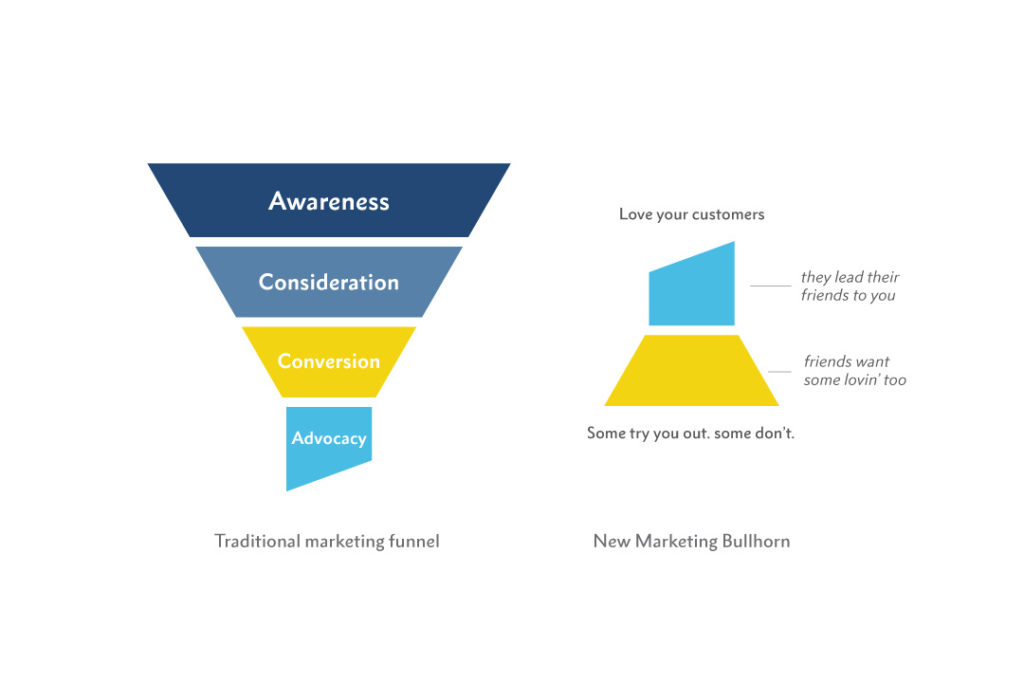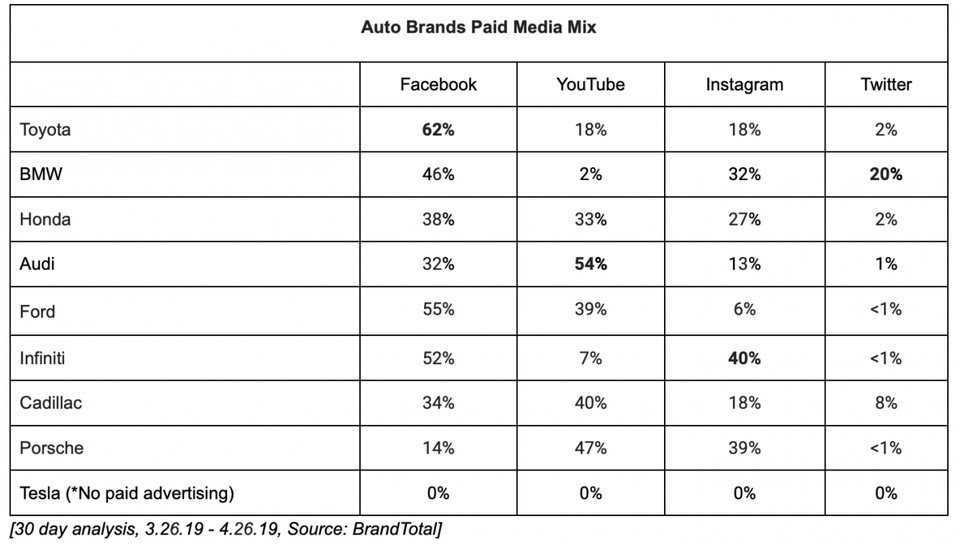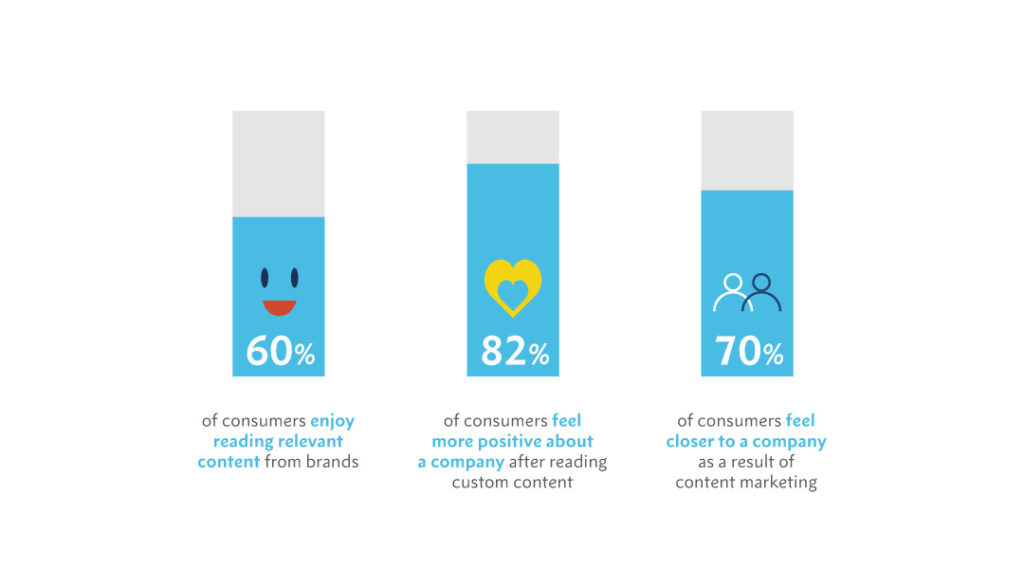Your company spends a lot on its marketing, but doesn’t have much to show for its efforts. Is it possible you’re going about things the wrong way? A reorientation of your strategic approach could be just what you need to get back on track.
Instead of simply pitching what you have to offer, consider an approach that puts the customer, rather than you, at the center. You may find that your marketing efforts generate greater traction when you provide your current and potential customers with genuinely useful content that can help them solve real problems in their lives.
The Content Marketing Institute explains the approach perfectly: “Content marketing is a marketing technique of creating and distributing valuable, relevant and consistent content to attract and acquire a clearly defined audience – with the objective of driving profitable customer action.”
Many businesses focus too heavily on the last part of that description, and spend a great deal of their time pushing for conversions. In the social media age, however, this impatient approach translates to bad strategy. A far more effective approach involves focusing not on what you need, but on what the customer needs.
Turn That Funnel into a Bullhorn
The marketing funnel is well known across the industry: Cast a wide net for maximum awareness, then push that audience inexorably toward greater interest and interaction, and eventually sales. This model was well designed for its time, but media technology has advanced considerably since then.
In an age when users can easily skip or scroll past online ads, that kind of active push toward conversions is likely to result in users simply unfollowing companies that keep urging them to buy. Some sales may result, but at the cost of a significant number of lost followers. Because ordinary users are now largely in control of what they want to see online, this ‘funnel’ approach is starting to look more and more like a sieve.

Success in a competitive world is all about timely adaptation rather than permanent solutions. In the present moment, the traditional marketing funnel is virtually the opposite of what is needed. By turning the funnel upside down, you can begin by winning over your existing audience – to the point where your customers take it upon themselves to amplify your message for you. Word-of-mouth advocacy can expand your main audience for you, creating new customers without any direct push towards sales from your company.
Your current customers will turn into genuine fans if they love what you have to offer, believe in your values, and trust that you are on their side. When these conditions are met, they will be eager to purchase more from you, and tell their friends about you – because they truly believe in your mission. An army of enthusiastic fans will do more to generate sales than the best internal sales and marketing team that money can buy.
This ‘bullhorn’ approach, where your core customers spread the word to new audiences, requires a concerted move away from sales pitches – and toward good-faith efforts at engaging with people where their interests and your field intersect. A company selling skin cream, for example, could blog about 10 Ways to Have a Great First Date. A bank could post a video about What You Need to Know Before Buying Your First House. When a business creates useful content, this content will get shared widely, and its viewers are far more likely to follow the company’s social media accounts. Sustained positive feeling towards a company almost always leads to an increase in sales.
A great example is Tesla, which released its very first car just 11 years ago. In its entire lifetime as a company, Tesla has spent a total of zero dollars on paid advertisements – focusing instead on making great cars for their customers, and sticking to their values as an environmentally responsible automaker.


Other car brands spend enormous sums on social media and other advertising channels – but still can’t beat Tesla, which is already the third-most valuable auto brand in the world.
Tesla, of course, does use social media to its advantage; although it avoids paid advertisements, the company is nevertheless active and engaging online. Presently, about 55% of Tesla’s organic engagement comes from Instagram. The company is also popular on Twitter, where its signal is boosted by the activity of Elon Musk, CEO of Tesla and frequent tweeter.
Tesla’s monumental success has been possible for the simple reason that a well-loved brand can inspire a high engagement rate. Tesla’s fans are indeed engaged and active, and the company constantly introduces software updates to make their existing customers even happier. This investment in quality and customer care creates excitement surrounding their products, making Tesla feel like a new and fresh alternative to the rest of the car industry.
The upshot is that, with customers and car fanatics buzzing about their cars, Tesla itself doesn’t have to make any extra investment in promoting brand awareness. Their customers are more than happy to handle that task for them.
Although this customer-centered communicative approach may be novel for many companies, other essential content marketing tips remain the same. The remainder of this article will help you follow these essentially timeless strategy suggestions.
Headlines are Critical

The headline is the most important part of any piece of writing. Without the right title, people won’t read the rest of the article at all. But by drawing people in with an engaging headline, your piece will stand out from the crowd. The effect works the same as a mouthwatering photo of food on the menu at a restaurant: You can’t help but order the dish, because it looks so good.
Almost as important as the headline, of course, is the first sentence. The very start of an article is usually included in Google search results, as well as social media thumbnails. This text can also influence people to want to read your article – or not.
SEO Will Make or Break Your Marketing Effort
When done the right way, search engine optimization (SEO) can help you stand out in a competitive market. Indeed, it is often remarked that the best-written content in the world won’t help you if nobody is around to see it.
In order to achieve their potential, the SEO keywords must be well researched, carefully chosen, and thoughtfully interspersed within your content. By finding the right balance between commonly searched keywords and phrases, and those that are less actively pursued by competitors, your business can rise quickly in the search engine rankings and get itself noticed.
Content Drives Loyalty
Making valuable content for your audience is all about knowing your audience, and tailoring your material to their needs and interests. It’s important to understand their problems, while giving a clear, reasonable explanation of how to solve them.
If the solution you recommend doesn’t involve buying your product, so much the better: The name of the game is building trust, and people tend to distrust companies whose answer to every question is “buy our product”. Indeed, your product may be one of many solutions you highlight – or you may only occasionally write about an issue where your product is the main solution – but you must always remember that your audience wants itself to be the hero, not you. Turning an article into consistent self-praise is the surest way to lose readers.
At this point, many traditional marketers may be wondering what the point of this exercise is, if it doesn’t lead to consistent self-promotion. The answer is that having useful and valuable content on your site will show your audience that you know what you are talking about. They will come back for more if they realize that you’re an expert in a field they care about, and that following you online will not result in them being spammed with sales pitches.
The graph below illustrates the point well. Customers simply feel more confident about companies after getting a positive impression of their content.

The formula is straightforward, and win-win for everyone involved. By creating value for your customers, they’ll give you their trust in return, as well as a positive brand reputation.
The content can be visual in nature, or take the form of videos or written content. They can also be presented as guides, comparisons, lists of tips (ahem), or tutorials. Anything that helps your customers get to know you better, and take the most value from your message, will have a positive effect on your brand. Simply put: If they like what they see, they will come back for more. Once your content is good enough, your audience will visit you regularly because they believe in you. And they’ll buy from you also, because they know you.
How to Win the Popularity Contest
As content marketing is essential for start-ups and industry giants alike, it’s best to implement these powerful content marketing tips as soon as possible. Just remember to start with what you have and grow from there, delivering value to your customers and framing each piece of content in an attractive package. Once you know what’s working for you, keep going and stay engaged with your customers.
The approach outlined above may not turn your business into an overnight success, but it is an excellent way to achieve medium-to-long-term growth. Rather than filling your content calendar with sales pitches, just work on creating a loyal base of customers who are eager to tell their friends about you.
In today’s cluttered advertising landscape, it is no longer wise to take your audience for granted. Yet by simply listening to them, relating to their struggles, and trying your best to help, they will start to follow you without needing any extra persuasion. And when you have their respect and attention, you will soon have their business.